Top investigative journalists spent Jan. 24 describing their boundless quests for interviews, whistleblowers, facts and data of all sorts. If PR blocks them, they go "up the line" to bosses, boards and anyone else.
Such reporters, a breed apart from regular journalists since they need weeks or months and a sizable budget to pursue their targets, explained Jan. 24 how they operate to 220 mostly younger journalists at the Graduate School of Journalism at City University of New York. The School is promoting a one semester Certificate in Journalism for $4,910 and a four-semester M.A. in the same subject.
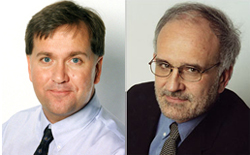 Barstow, Bogdanich |
Speakers such as Pulitzer Prize winners David Barstow and Walt Bogdanich of the New York Times, Jeff Pohlman of CNBC, and author David Cay Johnston (The Fine Print—How Big Companies Use Plain English to Rob You Blind) spoke of their unstinting efforts to get past communications blockades of all sorts.
Formal news sources such as PR are often of no help. Members of the general public are often leery about dealing with reporters, they noted.
Michelle Conlin of Reuters, researching a story on builders keeping mineral rights to land under homes they sold since there might be oil that could be obtained via “fracking,” called 50 owners of such homes and only found two who would talk to her.
Conlin and other panelists had high praise for the “techies” who are helping reporters by mining vast reaches of data in government and other sources that can be used in stories. She obtained her list of homebuyers that way.
Johnston Focused on “1% of 1%”
Johnston, president of Investigative Reporters & Editors, which arranged the event, said the average wage of Americans today is $26,000 which, adjusted for inflation, is below the wage level in 1966. Almost all of the gains since then have gone to those making more than $75K a year, he said. The 200 highest paid U.S. CEOs have annual packages that average $15 million.
Oxfam Int’l last week issued a report called “Working for the Few,” timing it for the meeting last week of the World Economic Forum in Davos, Switzerland, that said nearly half of the world’s wealth is going to the richest 1%.
 The 85 richest people in the world have the same amount of wealth as the bottom half of the world’s population, said the report. In the U.S., the 1% took 95% of the post-financial crisis growth between 2009-2012 while the bottom 90% became poorer.
The 85 richest people in the world have the same amount of wealth as the bottom half of the world’s population, said the report. In the U.S., the 1% took 95% of the post-financial crisis growth between 2009-2012 while the bottom 90% became poorer.
Rich/Poor Gap Evident at Meeting
The gap between rich and poor was evident at the IRE meeting.
A bargain rate was offered--$55 for the entire day which included a year’s membership (normally $70).
There was no lunch. The journalists, about half male and female, were told to visit any of the half dozen cafeterias on 40th st. between Seventh and Eighth avenues. That’s what we did, enjoying a chicken panini and cup of vegetable soup. There was a buffet dinner at 5 p.m. for those who stayed.
On the PR side, Publicity Club of New York is about the only New York PR group left of some 25 that existed in the 1970s and 80s that still holds regular lunches. Few of the 25 even exist anymore. The New York chapter of PR Society of America has not had a member lunch in decades. At the top of the ladder, however, there are many $400 and $500-ticket events for the higher echelons in journalism and PR.
CPJ is “High Society” of Journalism
One is the annual black tie banquet of the Committee to Protect Journalists at the Waldorf-Astoria where tickets are up to $1,000. CPJ, which focuses on press persecution overseas, had net assets of $14.9 million at the end of 2011, its latest report available on GuideStar. It filed at the last legal minute—Nov. 9, 2012, which is why GuideStar only has 2011.
CPJ is only 12 blocks from CUNY at 330 Seventh ave. but miles away socially and financially from the IRE meeting attendees. Its assets include $9.3M in stocks, and investments, cash and savings totaling another $5M.
We sought and won a press pass to the 2010 CPJ banquet but did not meet too many of the media stars. We were exiled to the balcony with other working press where we got sandwiches and soft drinks. Those in black tie downstairs had courses of vegetable tarts, salmon, lentils, asparagus and bread pudding. Although we sought to go to subsequent banquets, CPJ staff simply ignored our phone calls and e-mails.
The meetings of the PR executives in the Arthur W. Page Society at New York hotels have full lunches and dinners. The Foundation of the PR Society gives its annual Paladin Award to a PR executive at a banquet for which the tickets are $500.
The New York Financial Writers Assn. raises about a half million a year from Wall Street houses and blue chips at its black tie “Financial Follies.” Tables are $3,500. More than 400 financial journalists attend each year as guests of companies and PR firms that they cover.
IRE (EIN: 51-0166741), based at the University of Missouri School of Journalism, had net assets of $4,167,608 at the end of 2012. Revenues were $2,025,196. Assets include investments of $3,155,942. Dues income was $255,826.
Barstow Nixes Harper’s, Praises Whistleblowers
We asked IRE executive director Mark Horvit for a chance to address the meeting but he said the schedule was too tight.
Barstow, however, allowed us to speak for a few minutes to about 100 of the attendees. After a brief description of the O’Dwyer Co., we said the January issue of Harper’s has one of the best investigative pieces we have ever seen—the 16-page report on the servant school of Mary Louise Starkey in Denver that, while challenged by Starkey who correctly pointed out inaccuracies and rapped the ethics of Harper’s and writer John Davidson, nevertheless had lots of details on what it’s like to work for the super rich.
Davidson lied his way into the eight-week, $20K school (paid by Harper’s), pretending to be a property manager. He got others to support his phony resume when Starky made calls. Barstow said he would never engage in such “sleazy” tactics. Davidson could have interviewed butlers to get his material, said Barstow.
He said reporters get “lots of pushback” from story subjects and must learn to deal with it. His technique is to openly approach subjects and do all his data-gathering in the open.
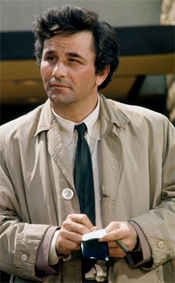 Peter Falk as 'Columbo' (Image: ABC)
|
The model he follows is the detective character Columbo created by Peter Falk in a series that ran mostly in the 1970s—humble, self-effacing, low-keyed and of limited finances.Columbo would get close to his subjects and slowly compile facts that towards the end came together in a compelling manner.
Bogdanich, who has won three Pulitizer prizes, follows a similar technique of getting a foot in the door at the beginning.
He says it is essential to meet the people involved in story rather than dealing with them via phone calls or e-mails. Story subjects that resist this can be told that he just wants to introduce himself and tell them what he is doing since people he calls for the story will start calling them. They can be promised off-the-record conversations. "I don't give up," he said. "I get in one way or another." The bosses of PR people can be called if the PR people do not respond, he added.
Tobacco Whistleblower Praised
While Barstow did not approve of Davidson’s approach, in which a journalist concealed his identity, he had praise for whistleblowers who are employed by a company, mentioning Merrell Williams Jr., who worked for Brown & Williamson Tobacco.
Williams, who died Nov. 27, 2013, used a rubber girdle starting in 1988 to hold documents he took outside the company for purposes of copying them, said Barstow. The documents showed B&W knew decades earlier that nicotine was addictive and that cigarettes caused cancer.
Jeff Wigand, another B&W employee who “outed” B&W, got most of the notoriety because he gave an interview to “60 Minutes” of CBS-TV, inspiring the 1999 movie, “The Insider.”
Mention of “The Insider” brings up the topic of the seven Tylenol murders of 1982 and the single murder by Tylenol in 1986 of 23-year-old Diane Elsroth.
NYT and many other media have been unstinting in their praise of Johnson & Johnson’s PR in the wake of the murders, positioning J&J as setting the “gold standard” for handling a crisis.
Fraser Seitel says in the 2014 edition of his textbook, The Practice of PR, that “Arguably, the two most important cases in the history of the practice of PR occurred within four years of each other to the same product and company.” He is referring to the Tylenol murders.
Actor Russell Crowe, playing Wigand in the “The Insider,” painted the usual inaccurate picture of what happened when he said, “James Burke, CEO of Johnson & Johnson, when he found out that some lunatic had put poison in Tylenol bottles, he didn’t argue with the FDA, he didn’t wait for the FDA to tell him, he just pulled Tylenol off the shelves in every store right across America instantly,” Burke “would not “allow his company to put on the shelf a product that might hurt people…” said Wigand.
What actually happened is that J&J initially confined the withdrawal to two small lots in the Chicago area and did not pull Tylenols from shelves “across America” until five days later (when there was nothing labeled Tylenol on any shelf in America anyway).
Whistleblower Scott Bartz Is Ignored
NYT reporters seek whistleblowers but the paper has ignored one of the best pieces of journalism we have ever seen—The Tylenol Mafia by former seven-year employee and whistleblower Scott Bartz.
Bartz, in more than 400 pages, details how the media, the police, the courts, the Food & Drug Administration and the FBI all took a pass on hard evidence to protect J&J from massive lawsuits.
The Bartz book, including a second edition, has been recognized by Wikipedia but not by the NYT and many other major media. They apparently consider it “too hot to handle.” Bartz detailed how the ingredients in Tylenols pass through as many as five sets of hands from J&J to stores, providing ample opportunity for someone to poison the Tylenols while still in J&J’s control. One victim, Mary Reiner, got her Tylenols from a secure hospital dispensary after she had given birth.
We would not propose the Tylenol murders as something for NYT reporters to investigate.
There is nothing to investigate. J&J should not have sold over-the-counter capsules that could be easily taken apart and spiked. Many pharmacists refuse to stock any such capsules. Tablets are safe and work just as fast.
Putting the vulnerable capsules back on the mass market just six weeks after seven people died by ingesting cyanide-laced capsules, resulting in another death by the same means four years later, deserves nothing by condemnation.


 Trump Media & Technology Group today reported a $58.2M net loss on $4.1M in 2023 revenues, a disclosure that drove its stock price down 22.6 percent to $47.96.
Trump Media & Technology Group today reported a $58.2M net loss on $4.1M in 2023 revenues, a disclosure that drove its stock price down 22.6 percent to $47.96. Barry Pollack, an attorney at Wall Street’s Harris St. Laurent & Wechsler, has registered Julian Assange as a client with the Justice Dept. “out of an abundance of caution.”
Barry Pollack, an attorney at Wall Street’s Harris St. Laurent & Wechsler, has registered Julian Assange as a client with the Justice Dept. “out of an abundance of caution.”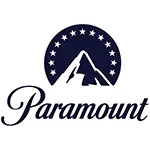 Paramount Global to slash 800 jobs in what chief executive Bob Bakish calls part of an effort to “return the company to earnings growth"... Rolling Stone editor-in-chief Noah Shachtman is exiting at the end of the month due to disagreements with chief executive Gus Wenner over the direction the magazine is taking... The New York Times broke the $1 billion barrier in annual revenue from digital subscriptions in 2023... Press Forward is investing more than $500 million to strengthen local newsrooms.
Paramount Global to slash 800 jobs in what chief executive Bob Bakish calls part of an effort to “return the company to earnings growth"... Rolling Stone editor-in-chief Noah Shachtman is exiting at the end of the month due to disagreements with chief executive Gus Wenner over the direction the magazine is taking... The New York Times broke the $1 billion barrier in annual revenue from digital subscriptions in 2023... Press Forward is investing more than $500 million to strengthen local newsrooms.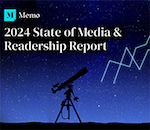 The majority of news articles are read within the first three days of publication, according to a recent report.
The majority of news articles are read within the first three days of publication, according to a recent report.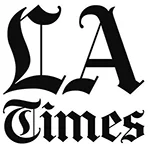 The Los Angeles Times gives pink slips to 115 people or 20 percent of its newsroom staff... TIME is also laying off about 30 employees, which is approximately 15 percent of its editorial staff... The Baltimore Banner, which was launched by Stewart Bainum in 2022 after he failed to buy the Baltimore Sun, added 500 subscribers per day in the three days following Sinclair Broadcast Group's deal to purchase the Sun.
The Los Angeles Times gives pink slips to 115 people or 20 percent of its newsroom staff... TIME is also laying off about 30 employees, which is approximately 15 percent of its editorial staff... The Baltimore Banner, which was launched by Stewart Bainum in 2022 after he failed to buy the Baltimore Sun, added 500 subscribers per day in the three days following Sinclair Broadcast Group's deal to purchase the Sun.


 Have a comment? Send it to
Have a comment? Send it to 
No comments have been submitted for this story yet.